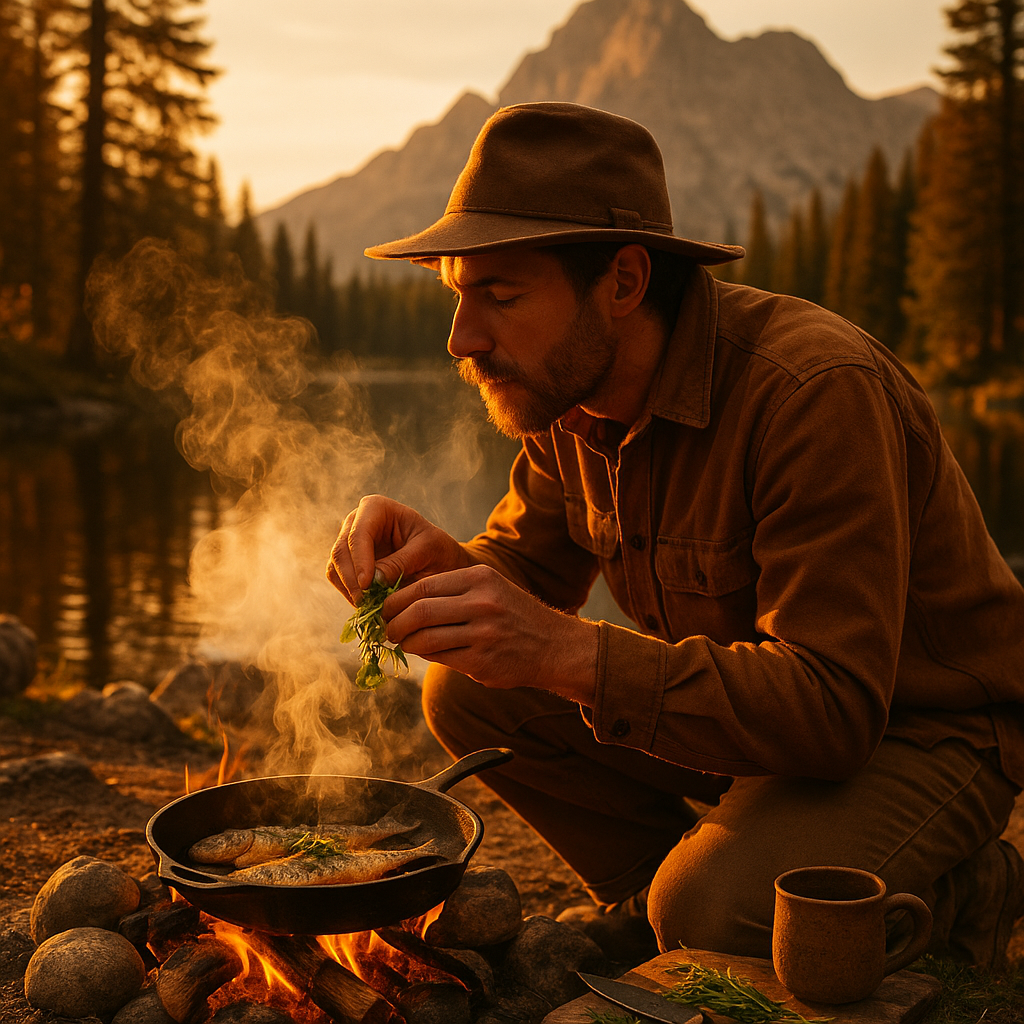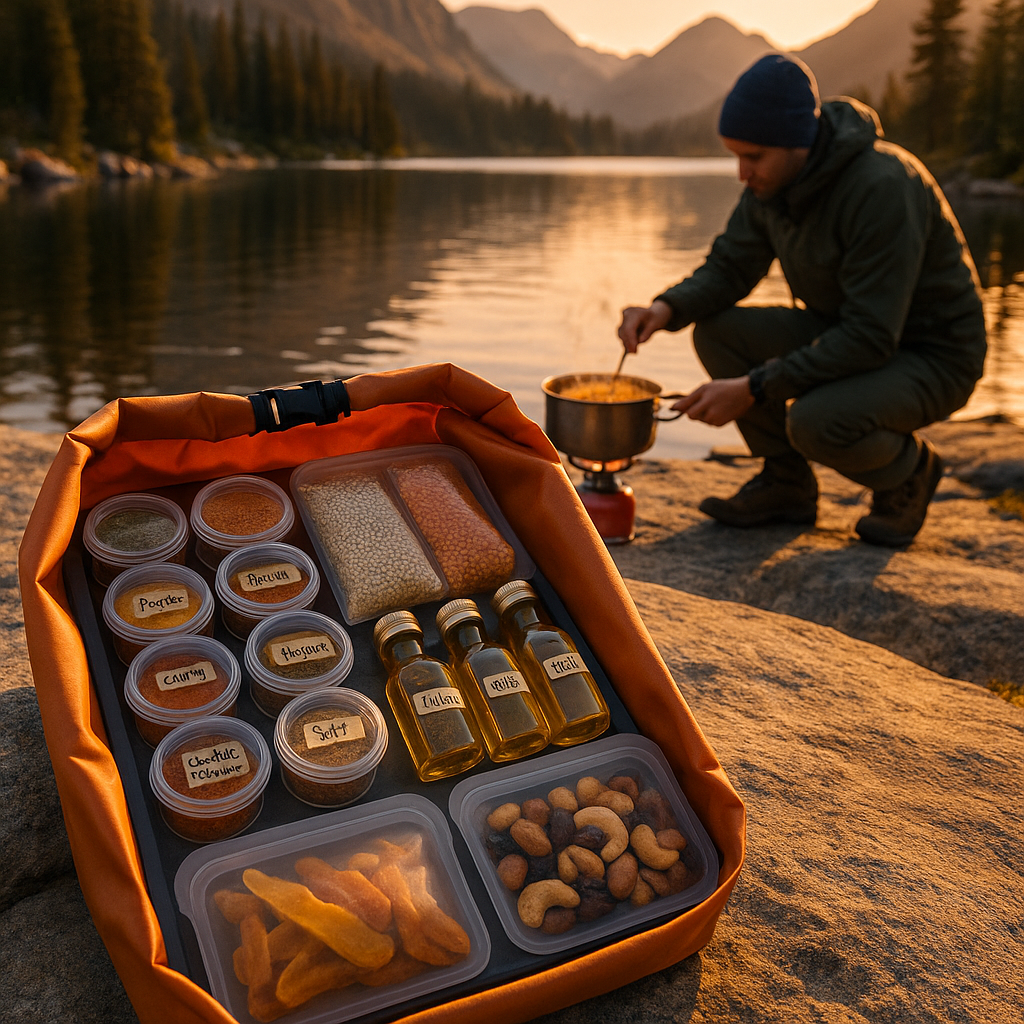Key Takeaways
- Unlocking nature’s flavor codes: Aroma is a powerful gateway to memory and emotion. Wild cooking transcends mere nourishment, becoming a symphony of scents that evoke deep-rooted feelings and unforgettable moments. Each meal cooked over open flame creates an emotionally charged experience, leaving a lasting sensory imprint.
- Smoke as an ancient flavor architect: The dance between smoke and food at a campfire reshapes how our senses perceive taste and aroma, crafting complex layers that no conventional kitchen can replicate. Smoke acts as both an ingredient and an enhancer, building flavor profiles rooted in the primal artistry of fire.
- Your brain on campfire scents: Outdoor aromas awaken neural pathways rarely touched by indoor cooking. As the smells of woodsmoke and sizzling ingredients drift on the breeze, our brains react with a unique, primitive anticipation, enriching both the experience and the flavors we detect.
- Dynamic aromas shape every bite: Aromas in the wild are ever-changing, evolving as food cooks over a fire. The interplay between ingredients, heat, and the natural environment transforms the simplest meal into an aromatic masterpiece, with each moment offering new scent notes to discover.
- Sensory analysis in the wilderness: Applying sensory evaluation techniques (such as mindful sniffing, tasting, and observation) brings a new dimension to outdoor cooking. By tracking how aromas shift in nature and taking notes beneath the sky, you fine-tune your flavor intuition and create more memorable meals.
- Reclaiming ritual: Wild cooking is a universal ritual that unites science and instinct. Merging the neuroscience of aroma with hands-on, primal methods invites us to join a timeless tradition, forging meaningful bonds across cultures and generations through the shared sensory adventure of outdoor feasting.
By delving into the hidden science of wild cooking, you elevate both your culinary skills and your connection to the land and each other. Every outdoor meal becomes a multisensory journey, where aroma is the thread that ties flavors, memories, and people together. Let’s venture deeper into the wild, where every breath unveils a story waiting to be tasted.
Introduction
Close your eyes. Picture the sharp tang of wild garlic curling through morning mist, or the earthy sweetness of pine and sizzling fat as flames lap at an iron skillet. These aren’t just pleasant smells: they are mental time machines, transporting you to moments of gathering, laughter, or quiet reflection beside a campfire. Within the wilderness, every scent forms a secret map. One that rewires how we taste, remember, and connect beneath starlit skies.
Embracing the science of aroma reveals wild cooking as an artform rooted in both nature and neuroscience. Aroma is more than a finishing touch; it is the silent architect of emotion, memory, and flavor. By understanding the interplay between your olfactory system and the elemental forces of smoke, earth, and sky, you gain the power to create meals that resonate long after the embers have faded.
Let’s uncover the ways in which harnessing the power of scent can transform your outdoor meals from routine sustenance into immersive adventures, where every bite is a celebration of place and story.
Stay Sharp. Stay Ahead.
Join our Telegram Channel for exclusive content, real insights,
engage with us and other members and get access to
insider updates, early news and top insights.
 Join the Channel
Join the Channel
The Neuroscience of Aroma Sensory in Wild Cooking
Every wild setting is a living cathedral for the senses, yet none are more deeply entwined with memory and emotion than our sense of smell. Aroma sensory science tells us that humans possess over 400 scent receptors. These allow us to perceive a stunning array of aromatic compounds, often before the first taste even reaches our tongues.
In the wilderness, this effect is magnified. The scents of smoke, charred earth, dew-drenched grass, and windblown herbs become part of each meal’s narrative. When fire crackles beneath a pine canopy, volatile aromas mix into the air, triggering neural activity in the brain’s limbic system. This is the seat of emotion and memory; it stores the aroma of roasted coffee at sunrise or caramelized onions as stories of place and togetherness.
Outdoor meals are always unique, in part due to their ever-changing environment. Consider slow-roasting trout by a riverbank: the confluence of smoky wood, mineral-rich air, and briny fish creates an unrepeatable flavor signature. Neuroscientific studies have shown that novel scents (especially those discovered outdoors) activate stronger, longer-lasting memories, as the brain draws from a richer palette of sensory stimuli.
By recognizing the profound influence scent has on perception, we open new possibilities in the wild. Next, let’s explore how environmental factors further sculpt these aromatic experiences.
Environmental Alchemy: How Nature Shapes Aroma Release Cooking
Nature is both a collaborator and an unpredictable force in outdoor cooking. The way aromas unfold in the wilderness differs from the confines of an indoor kitchen. Breeze, humidity, altitude, and even the mineral content in the soil all influence how scent molecules are released and dispersed.
For example, in the misty forests of the Pacific Northwest, an evening of cooking venison stew beneath a cedar canopy illustrates this alchemy clearly:
- As twilight draws in and humidity rises, earthy and smoky notes collect near the fire, creating an enveloping savory foundation for the stew.
- When the wind picks up, lighter herbal aromas (like wild thyme and chives) travel across the clearing, adding fleeting top notes to each bite.
Adventurous cooks quickly discover ways to use the wild to their advantage. By choosing aromatic woods, adjusting the fire’s intensity, and positioning themselves to catch prevailing breezes, they can artfully curate the olfactory experience. Smoke acts not just as a cooking tool but also as an evocative layer, tying the sensory experience to the environment and the moment shared.
Through careful observation and adaptation, each meal transforms from mere sustenance into an emotional memory. A reminder that place and time shape flavor as much as any seasoning. To understand this transformation more deeply, we turn to the wild chemistry between food, fire, and sensory alchemy.
Food Matrices and the Wild Transformation of Flavor
Wilderness cooking thrives on the synergy between raw ingredients and the environment. Scientific studies in sensory analysis reveal that, as ingredients meet heat and smoke, they undergo biochemical shifts that unlock new aromatic possibilities.
Consider the lakeside breakfast: eggs cracked onto a smoking griddle set on polished stones, wild onions tossed in at the last moment. The heat causes egg proteins to build pockets that trap smoke, while the onions’ sharpness is mellowed by open fire. Every element (the wind, the minerals in the stones, the dampness of the grass underfoot) contributes to a complex and uniquely wild aroma.
There are practical strategies to harness this transformation:
- Fatty meats absorb and amplify smoky aromas, so slow-roasting cuts over embers enhances depth of flavor.
- Herbs added late in the cooking process deliver fresh, bright scents that rise above the richer base notes.
- Allowing grilled food to rest near smoldering coals encourages a gentle infusion of subtle, lingering aromas.
Some outdoor chefs use informal sensory panels during expeditions. For instance, a culinary group in the Scottish Highlands compared fresh trout roasted over peat smoke with fish pan-seared indoors. The peat-roasted version left an indelible memory, described not just in typical flavor terms, but as “heather on the wind” and “morning mist.”
This wild transformation is available to everyone, not just chefs, but any cook willing to listen to the landscape and experiment with their own sensory journey.
Sensory Training and Outdoor Aroma Evaluation
Mastering aroma outdoors starts with attunement. The wilderness encourages us to rely on our senses more intuitively. Sensory scientists suggest both structured and playful aroma exercises to enhance olfactory awareness while cooking in nature.
Simple Steps for Wild Aroma Evaluation:
- Pause for a breath before seasoning. Absorb the scents of your raw ingredients and surroundings: is there dew, resin, fresh earth?
- Tune in to cooking aromas. As food cooks, note which scents intensify or diminish. Try closing your eyes to let scent lead every impression.
- Smell from different vantage points. Step away from the fire, then return. How does wind or distance shift each aroma?
- Record your experience. Use sketches, local metaphors, or vivid descriptions to map your own “aroma landscape.”
A practical example comes from a team trekking through Patagonia, who kept aroma journals during meals. Those who practiced intentional aroma evaluation reported significantly richer, more detailed memories weeks afterwards, creating a shared language that brought the experience to life long after the tents were packed away.
Stay Sharp. Stay Ahead.
Join our Telegram Channel for exclusive content, real insights,
engage with us and other members and get access to
insider updates, early news and top insights.
 Join the Channel
Join the Channel
Sharpening these senses makes for better outcomes: fewer burnt roasts, more harmonious food pairings, and a heightened capacity to adapt to new environments. Above all, it nurtures a deeper appreciation for the unique magic of wild meals.
As we build these skills, we tap into cultural traditions that have long appreciated scent as the soul of outdoor feasting. This connection between memory and ritual deepens the resonance of every campfire meal.
Cultural Perspectives: Scent as Memory, Ritual, and Connection
Throughout history, scent has served as both a guide and a storyteller in outdoor cooking rituals. From the smoky tundra feasts of the Sámi, where birch-infused air marks the flavor of tradition, to herby fireside gatherings along the Mediterranean, aroma anchors people to land and legacy.
In Moroccan nomadic culture, the scent of wild herbs crushed by hand and roasted over bare stones signals more than hunger; it is a sign of celebration, drawing neighbors together through invisible threads of community. In Japanese robatayaki, the scent of slow-burning binchotan charcoal inspires calm and contemplation, shaping not only the flavor but the emotional tone of the meal.
By blending thoughtful aroma appreciation with wild cooking, adventurers and cooks can transcend taste alone. They become keepers of sensory memory, creating new rituals rooted in place, time, and shared experience. This is a tradition open to anyone who is willing to cook with curiosity and reverence for both ingredient and landscape.
Taking this cultural lens enriches our own journeys. Every outdoor meal becomes a fleeting monument. An offering to place, people, and memory, told in a language only the senses can truly speak. With each meal crafted beneath open sky, we strengthen a timeless heritage of connection.
Expanding the Aroma Experience Across Industries and Settings
The science behind aroma sensory in wild cooking holds valuable lessons for a variety of fields beyond culinary adventure:
- In healthcare, leveraging the power of aroma can aid in memory care and patient comfort, as familiar natural scents have been shown to reduce stress and trigger positive emotional responses.
- In marketing and retail, outdoor-inspired scents have been used to shape consumer behavior, heightening brand recall and creating immersive store experiences.
- Environmental scientists use aroma mapping to track changes in ecosystems, helping measure the impact of forest fires or restoration efforts.
- In education, incorporating sensory analysis into outdoor classrooms deepens student engagement and fosters a holistic connection with the subject matter.
- Even in finance and legal domains, team-building culinary adventures in nature use sensory evaluation as a metaphor for trust, observation, and consensus-building.
Recognizing aroma as a powerful connector, these varied applications underscore its role in creating richer, more resonant experiences, regardless of context.
Conclusion
To cook in the wild is to step into a living tapestry woven from memory, emotion, and place. Through the interplay of scent, smoke, and the natural world, our understanding of food transforms. It’s no longer only about nourishment. It grows into an act of storytelling, wonder, and connection.
Training our senses outdoors, we become not just cooks, but storytellers and guardians of transient rituals. We join a lineage of cultures that have long celebrated scent as the heart of outdoor feasting. The fusion of neuroscience, culture, and sensory intuition creates space for profound experience and emotional resonance.
Looking toward the future, those who embrace aroma as both science and art will find their outdoor adventures (and their lives) infused with deeper flavor, meaning, and joy. The next time you kindle a fire beneath the sky, let your senses wander freely. The enduring aromas you discover will remain long after the last ember fades. They serve as a gentle reminder that food, fire, and freedom are not just sustenance, but a soulful way of being in the world.
No internal links were inserted because there were no existing articles provided in the list.





Leave a Reply